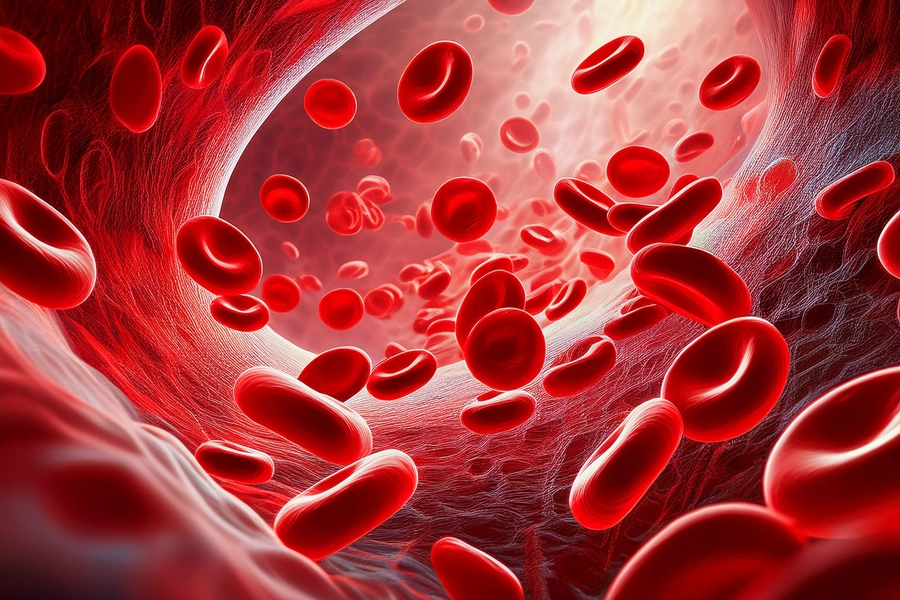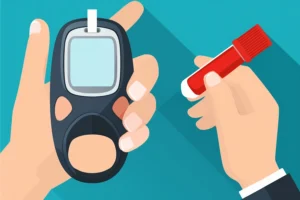April 17 marks World Hemophilia Day, a global awareness campaign dedicated to shining a light on hemophilia and other inherited bleeding disorders. Established by the World Federation of Hemophilia (WFH), this day honors the legacy of Frank Schnabel, the WFH founder and seeks to promote better diagnosis, treatment and support for individuals living with these conditions.
Hemophilia may be rare, but for those affected, it brings lifelong challenges from spontaneous bleeding and painful joint damage to the daily need for factor replacement therapies.
Many still lack access to proper diagnosis and care, especially in lower-income regions. Understanding hemophilia isn’t just important for those diagnosed, it helps families, caregivers and communities support those affected and push for better healthcare resources globally.
In this article, you’ll gain a comprehensive understanding of hemophilia: from its causes, symptoms, inheritance and complications.
What Is Hemophilia?
Hemophilia is a rare, inherited bleeding disorder in which the blood lacks sufficient clotting factors, that is, proteins essential for stopping bleeding. Most commonly, it involves low or absent levels of clotting factor VIII (Hemophilia A) or factor IX (Hemophilia B). As a result, individuals with hemophilia bleed for a longer time after injuries, surgery or even spontaneously without any clear cause.1,2
The severity of hemophilia depends on the level of clotting factor present in the blood:1
◦ Mild: Bleeding usually occurs only after injury or surgery.
◦ Moderate: Occasional spontaneous bleeding and more significant bleeding after minor injuries.
◦ Severe: Frequent spontaneous bleeding episodes, particularly into joints and muscles. Repeated bleeding into joints (called Hemarthrosis) can lead to chronic pain, inflammation and eventually crippling joint deformities if left untreated.
Types and Causes of Hemophilia
Hemophilia is not a single condition, but a group of bleeding disorders characterized by deficiencies in specific clotting factors. While the underlying problem in all types involves poor blood clotting, the type of hemophilia depends on which clotting factor is lacking. Major types are:
1.Hemophilia A (Classic Hemophilia)
This is the most common form of hemophilia, also known as Factor VIII (8) Deficiency or Classic Hemophilia caused by a deficiency or absence of clotting factor VIII.3 It is typically inherited in an X-linked recessive pattern, which means it primarily affects males, while females are carriers.4
Hemophilia A presents a wide range of severity from mild to severe bleeding tendencies. The specific mutation in the factor VIII gene influences how severe the symptoms are, and it also affects the likelihood of developing inhibitors, which are antibodies that can neutralize treatment efforts.
2.Hemophilia B (Christmas Disease)
Named after Stephen Christmas, the first diagnosed patient, Hemophilia B results from a deficiency in clotting factor IX.5 Although less common than Hemophilia A, it shares many clinical features. It is also inherited in an X-linked pattern and its severity is similarly determined by the type of genetic mutation present.
Despite the similarities with Hemophilia A, Hemophilia B may respond differently to treatment, and certain mutations may increase the risk of complications, such as inhibitor formation.
3.Hemophilia C (Rosenthal syndrome)
Hemophilia C, also known as Factor XI deficiency or Rosenthal syndrome, is a rare inherited bleeding disorder where the blood lacks enough clotting factor XI, leading to problems with bleeding, especially after surgeries or dental work. Unlike Hemophilia A and B, it is not linked to the X chromosome and can affect both men and women equally.
It is more common in people of Ashkenazi Jewish descent, where around 1 in 8 individuals may carry the gene. Hemophilia C is usually milder, with less frequent spontaneous bleeding, and many people may not know they have it until they experience unusual bleeding during a procedure. Treatment is often only needed before surgeries and includes medications or plasma to help the blood clot properly.6
4.Acquired Hemophilia
Acquired hemophilia (AH) is a rare but serious autoimmune bleeding disorder that occurs when the body’s immune system mistakenly produces antibodies that attack its own clotting factors, most commonly factor VIII. Unlike inherited forms of hemophilia, AH typically affects people with no personal or family history of bleeding disorders. This condition can lead to unexpected and sometimes severe bleeding into the muscles, skin, or soft tissues, and may occur spontaneously, after an injury, or during surgery.
Common signs include frequent nosebleeds, widespread bruising, blood in the urine and bleeding in the digestive or urinary tracts. In some cases, firm swellings filled with blood, called hematomas, can also develop. AH can be life-threatening if not diagnosed and treated promptly. About half of the cases are linked to other underlying conditions like autoimmune diseases, cancer, or recent childbirth, while the rest have no identifiable cause.7
Physiology of Clotting and Hemophilia
Under normal conditions, when a blood vessel is injured, the body initiates a two-step process to stop bleeding:
1. Platelet Plug Formation: Platelets quickly adhere to the site of injury, clumping together to form a temporary plug.
2. Clotting Cascade Activation: A series of clotting factors are activated in a specific sequence, ultimately converting fibrinogen into fibrin, which stabilizes the platelet plug and forms a durable blood clot.
In hemophilia, this clotting cascade is interrupted due to a deficiency or absence of clotting factor VIII (Hemophilia A) or factor IX (Hemophilia B):
◦ The absence of these essential factors means the cascade cannot proceed beyond a certain point.
◦ As a result, fibrin formation is impaired, and the clot remains weak or fails to form.
◦ This leads to prolonged or spontaneous bleeding, especially in joints, muscles, and internal organs even from minor injuries.
This disruption in the clotting mechanism is the root cause of the bleeding problems seen in individuals with hemophilia.
Symptoms of Hemophilia
Hemophilia, whether Hemophilia A (HA) or Hemophilia B (HB), presents with similar clinical symptoms, with bleeding being the primary hallmark. The type and severity of bleeding directly depend on the degree of clotting factor deficiency and can vary across different age groups.
Common Symptoms Across All Types:8
◦ Easy bruising and deep bruises with little to no trauma
◦ Prolonged bleeding after cuts, surgery, dental procedures, or injections ◦ Frequent nosebleeds that are hard to stop (epistaxis)
◦ Bleeding into joints (hemarthrosis): especially knees, elbows, and ankles
– Pain, swelling, stiffness, and warmth in joints
– Recurrent joint bleeds can lead to chronic synovitis and arthropathy
◦ Muscle and soft tissue bleeding leading to hematomas
◦ Blood in urine (hematuria) or stool, indicating internal bleeding
◦ Bleeding in the mouth and gums, often after tooth loss or dental work ◦ Bleeding in the brain, even from minor head trauma – life-threatening
◦ Breathing problems, due to bleeding into the neck or base of the tongue
◦ Post-circumcision bleeding in newborn boys
◦ Unexplained irritability in infants, possibly due to undetected internal bleeding
Risk Factors of Hemophilia
While hemophilia is most commonly an inherited condition, several other factors can increase the risk of developing bleeding disorders:9
1. Genetic and Inherited Risk Factors:
◦ Family History: Hemophilia is often passed down through families as an X-linked genetic disorder, primarily affecting males.
◦ Spontaneous Mutations: About one-third of hemophilia cases result from new genetic mutations, with no family history.
◦ Gender: Males are at higher risk for inherited hemophilia, while females may be carriers.
◦ Ethnicity: Hemophilia C (Factor XI deficiency) is more common in Ashkenazi Jews.
2.Age and Life Stage:
◦ Newborns: At higher risk for vitamin K deficiency bleeding.
◦ Older Adults: More prone to developing acquired hemophilia, especially due to underlying health conditions or medications.
3.Medical Conditions and Procedures:
◦ Autoimmune Diseases: Conditions like rheumatoid arthritis or lupus can lead to acquired hemophilia.
◦ Cancer and Lymphoproliferative Disorders: Certain cancers, including types of leukemia, are linked to bleeding issues.
◦ Liver Disease: The liver produces clotting factors; liver dysfunction can impair this process.
◦ Heart Diseases: Both congenital and acquired heart conditions may increase bleeding risk.
◦ Infections and Immune Disorders: These can trigger abnormal immune responses, affecting clotting.
◦ Bowel Diseases or Surgery: These may interfere with nutrient absorption or clotting factor function.
◦ Pregnancy and Postpartum Bleeding: Can deplete clotting factors rapidly, increasing bleeding risk.
4. Medications and Treatments:
◦ Antibiotics and Interferon Alpha: Some drugs can interfere with clotting mechanisms.
◦ Blood Thinners (Anticoagulants): Used to prevent clots but increase bleeding tendency.
◦ Heart-Lung Bypass Devices: Used during surgery and may contribute to acquired bleeding conditions.
◦ Ventricular Assist Devices: May affect blood flow and clotting factor activity.
5.Other Factors:
◦ Blood Transfusions: Can trigger immune responses affecting clotting.
◦ Skin Conditions or Severe Trauma: Especially injuries to the head or internal organs can provoke dangerous bleeding episodes.
These diverse risk factors emphasize that bleeding disorders, including hemophilia (inherited or acquired) may affect individuals at various stages of life depending on their health status and medical history.
Complications of Hemophilia
Hemophilia can lead to several serious complications:10,11,12,13
◦ Joint Bleeding (Hemarthrosis): Frequent bleeding into joints especially the knees, ankles and elbows causes pain, swelling and stiffness. Over time, this leads to joint damage, deformities, cartilage erosion and hemophilic arthropathy (HA), severely impacting mobility and quality of life.
◦ Inhibitor Development: Some patients develop antibodies that reduce the effectiveness of clotting factor treatments, making bleeds harder to control.
◦ Severe or Internal Bleeding: Life-threatening bleeds, including intracranial hemorrhage, can occur, especially in untreated or poorly managed cases.
◦ Transfusion-Related Infections: Past treatments carried risks of infections like HIV and hepatitis, though modern screening has largely eliminated this risk.
◦ Psychosocial Effects: Chronic pain, physical limitations and treatment costs can lead to anxiety, depression and reduced overall well-being.
Age-Specific Considerations:
◦ Newborns: High risk of intracranial hemorrhage, especially during difficult delivery – 40 to 80 times more frequent than in the general population.
◦ Infants and children: Increased risk of bleeds from circumcision, falls and immunization shots
◦ Active children and adults: Prone to musculoskeletal bleeding due to increased physical activity and accidental trauma.
Conclusion
Hemophilia may be rare, but its effects are far-reaching, impacting not only those living with the condition but also their families and support systems. From spontaneous bleeding and joint damage to the emotional and physical challenges it brings, hemophilia is a lifelong condition that requires awareness and careful management.
By recognizing World Hemophilia Day on April 17, we honor those affected and help bring attention to the importance of early diagnosis, proper education and community support. Understanding the causes, symptoms and complications of hemophilia empowers us to recognize warning signs, reduce stigma and advocate for better resources especially in regions where awareness is still limited.
Spreading knowledge is the first step toward building a more supportive and inclusive world for individuals living with bleeding disorders. Let’s continue to learn, share, and support each other in creating that change.
References
- Kate Khair. Management of haemophilia in children. Paediatrics and Child Health. 2019;29(8): 334-338. https://www.sciencedirect.com/science/article/abs/pii/S1751722219301131
- About Hemophilia. CDC. Published on March 5, 2025. Accessed on April 15, 2025. Availabe from: https://www.cdc.gov/hemophilia/about/index.html
- National bleeding Disorders Foundation. Hemophilia A. National bleeding Disorders Foundation. Accessed on April 15, 2025. Available from: https://www.bleeding.org/bleeding-disorders-a-z/types/hemophilia-a
- Chowdary, Pratima et al. Haemophilia. The Lancet. 2025(405)10480:736 – 750. https://www.thelancet.com/journals/lancet/article/PIIS0140-6736(24)02139-1/abstract
- Etanjalie Ayala. Explainer: Why Is Hemophilia B Called Christmas Disease?. CSL. Published on Nov 28, 2022. Accessed on April 15, 2025. Available from: https://www.csl.com/we-are-csl/vita-original-stories/2022/explainer-why-is-hemophilia-b-called-christmas-disease
- Mandal S, Gami S, Shah S. A Case Report on an Extremely Rare Disease: Factor XI Deficiency. Cureus. 2020 Oct 1;12(10):e10746. https://pmc.ncbi.nlm.nih.gov/articles/PMC7603878/
- National Organization for rare disorders. Acquired Hemophilia. NORD. Updated on April 27, 2022. Accessed on April 15, 2025. Available from: https://rarediseases.org/rare-diseases/acquired-hemophilia/
- Larry J. Smith. American Society for Clinical Laboratory Science January 2019, 32 (1) 21-26. https://clsjournal.ascls.org/content/32/1/21
- National Heart, Lung and Blood Institute. Bleeding Disorders:Causes and Risk Factors. Updated on August 07, 2023. Accessed on April 16, 2025. https://www.nhlbi.nih.gov/health/bleeding-disorders/causes
- Bordbar, M., Beigipour, R., Tahami, M. et al.Skeletal complications in patients with hemophilia: a single-center experience. J Orthop Surg Res. 2023;18: 907. https://josr-online.biomedcentral.com/articles/10.1186/s13018-023-04409-w
- Johns Hopkins Medicine. Hemophilia. Johns Hopkins Medicine. Accessed on April 16, 2025. Available from https://www.hopkinsmedicine.org/health/conditions-and-diseases/hemophilia-in-children
- Rodriguez-Merchan EC. Prevention of the musculoskeletal complications of hemophilia. Adv Prev Med. 2012;2012:201271. https://pmc.ncbi.nlm.nih.gov/articles/PMC3384927/
- AzharAAMet al. Int J Res Med Sci. 2021Jun;9(6):1800-1807. https://www.msjonline.org/index.php/ijrms/article/view/9730/6543




